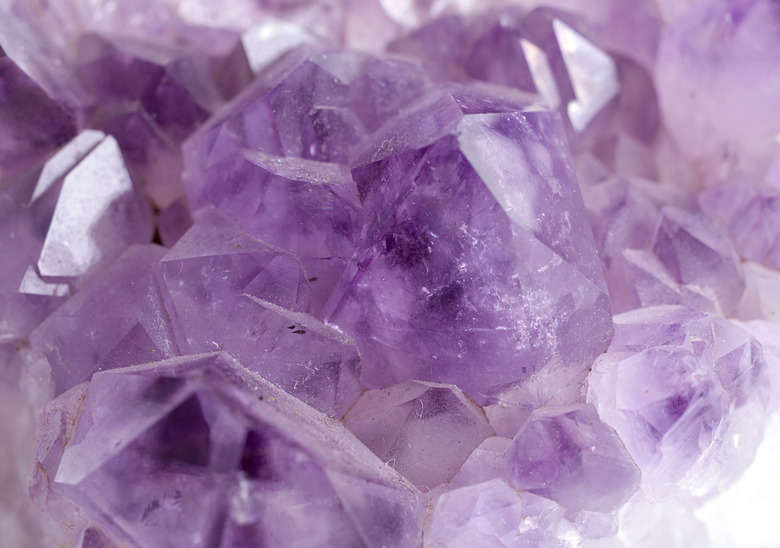Interesting Facts On Crystals
Crystals have been captivating people for centuries. Humans have historically used crystals in jewelry and even for the purposes of healing and promoting good energy. One of the most unique things about crystals is their cellular structure. Their structure is what gives crystals their unique appearance.
What Is a Crystal?
What Is a Crystal?
Crystals are molecules that form in a replicating "regular" grid pattern in a well-organized structure. Sets of molecules fit together and repeat themselves over and over again, giving the crystal its shape. Crystal molecules can come in several types of structures, including monoclinic, triclinic, trigonal, hexagonal and tetragonal.
When you think of a crystal, you likely picture a gem or other shiny mineral. However, many different objects can form crystals – including human DNA – though more common crystallizations include graphite, snow and salt.
How Do Crystals Form?
How Do Crystals Form?
Crystals form in many different ways depending on the item that is crystallizing. Some occur due to rapid changes in temperature or pressure – such as with the production of diamonds – while others form through evaporation or other reactions. However, crystals cannot form within a liquid without some sort of core on which to grow.
18 Fun Crystal Facts
18 Fun Crystal Facts
1. Diamond crystals are formed when pressurized molten lava cools rapidly. 2. Chemists working through Purdue University, New York University and Argonne National Library created crystals of DNA large enough to see without a microscope. 3. The provincial mineral of Ontario, Canada, is the amethyst. 4. "Crystal" glasses commonly used in dinnerware are actually not made with true crystal, despite their name and appearance. 5. Researchers discovered the largest crystals in the world in a mine in Chihuahua, Mexico. The largest of the gypsum crystals discovered measured over 36 feet long and 6 feet across. 6. If the ocean evaporated, the crystallized salt left behind would measure 4.5 million cubic miles. 7. In addition to their use in jewelry and for decoration, people have also used crystals for their positive "energy" and as good luck charms. 8. The oldest recorded objects on Earth are zircon crystals from western Australia. Researchers estimate these crystals date back over 4.4 billion years. 9. Scientists have discovered silicate crystals within icy comets, and they believe these crystals formed through exposure to solar flares. 10. The crystal gypsum is commonly used in drywall, so you may have gypsum in your home right now. 11. The bedrock beneath the streets of New York City contains a variety of crystals, including opal, garnet, tourmaline, beryl and more. 12. In the year 1885, during construction in New York City – near Broadway on 35th street – laborers discovered a 10-pound garnet beneath the ground. The garnet sold for just $100 – after adjusting for inflation that amount equates to just $2,300 today! 13. Researchers now believe the planet's core consists of an aggregation of iron crystals. Original theories led researchers to believe that the core consisted of a single iron crystal 1,500 miles wide. 14. The largest diamond ever recorded was discovered in South Africa in 1905. The diamond, known as the "Cullinan diamond," measured a whopping 3,106 carats. 15. The Cullinan diamond was eventually cut into over 100 individual stones and is now part of the British Regalia. The royal family set the largest stone – at a modest 530 carats – into a royal scepter. 16. Though crystallized snow contains only water, as it collects on the ground, it picks up many pollutants such as soot and mercury. 17. Sugar is one of the most common crystals used today. The average U.S. citizen consumes approximately 130 pounds of sugar per year. 18. A pink diamond by the name of "The Sakura" set world records in May when it sold at auction in Hong Kong. A private buyer purchased the diamond for a whopping $29.3 million.
Cite This Article
MLA
Zinni, Yasmin. "Interesting Facts On Crystals" sciencing.com, https://www.sciencing.com/interesting-crystals-6125347/. 1 December 2021.
APA
Zinni, Yasmin. (2021, December 1). Interesting Facts On Crystals. sciencing.com. Retrieved from https://www.sciencing.com/interesting-crystals-6125347/
Chicago
Zinni, Yasmin. Interesting Facts On Crystals last modified August 30, 2022. https://www.sciencing.com/interesting-crystals-6125347/
